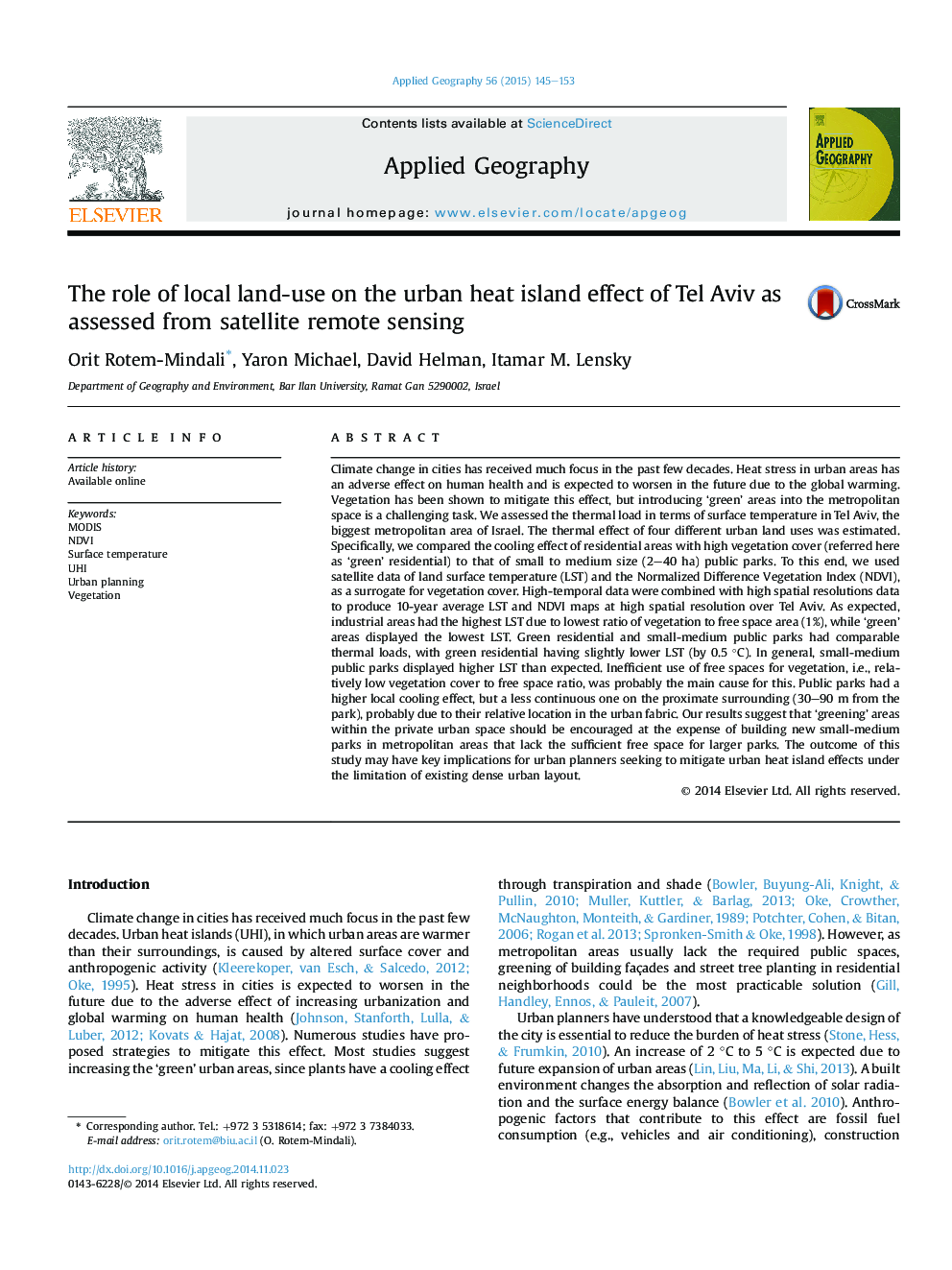| کد مقاله | کد نشریه | سال انتشار | مقاله انگلیسی | نسخه تمام متن |
|---|---|---|---|---|
| 6538649 | 158703 | 2015 | 9 صفحه PDF | دانلود رایگان |
عنوان انگلیسی مقاله ISI
The role of local land-use on the urban heat island effect of Tel Aviv as assessed from satellite remote sensing
ترجمه فارسی عنوان
نقش استفاده از زمین های محلی بر اثر بخشی گرما در شهر تل آویو به وسیله سنجش از راه دور ماهواره ای تعیین شده است
دانلود مقاله + سفارش ترجمه
دانلود مقاله ISI انگلیسی
رایگان برای ایرانیان
کلمات کلیدی
موضوعات مرتبط
علوم زیستی و بیوفناوری
علوم کشاورزی و بیولوژیک
جنگلداری
چکیده انگلیسی
Climate change in cities has received much focus in the past few decades. Heat stress in urban areas has an adverse effect on human health and is expected to worsen in the future due to the global warming. Vegetation has been shown to mitigate this effect, but introducing 'green' areas into the metropolitan space is a challenging task. We assessed the thermal load in terms of surface temperature in Tel Aviv, the biggest metropolitan area of Israel. The thermal effect of four different urban land uses was estimated. Specifically, we compared the cooling effect of residential areas with high vegetation cover (referred here as 'green' residential) to that of small to medium size (2-40 ha) public parks. To this end, we used satellite data of land surface temperature (LST) and the Normalized Difference Vegetation Index (NDVI), as a surrogate for vegetation cover. High-temporal data were combined with high spatial resolutions data to produce 10-year average LST and NDVI maps at high spatial resolution over Tel Aviv. As expected, industrial areas had the highest LST due to lowest ratio of vegetation to free space area (1%), while 'green' areas displayed the lowest LST. Green residential and small-medium public parks had comparable thermal loads, with green residential having slightly lower LST (by 0.5 °C). In general, small-medium public parks displayed higher LST than expected. Inefficient use of free spaces for vegetation, i.e., relatively low vegetation cover to free space ratio, was probably the main cause for this. Public parks had a higher local cooling effect, but a less continuous one on the proximate surrounding (30-90 m from the park), probably due to their relative location in the urban fabric. Our results suggest that 'greening' areas within the private urban space should be encouraged at the expense of building new small-medium parks in metropolitan areas that lack the sufficient free space for larger parks. The outcome of this study may have key implications for urban planners seeking to mitigate urban heat island effects under the limitation of existing dense urban layout.
ناشر
Database: Elsevier - ScienceDirect (ساینس دایرکت)
Journal: Applied Geography - Volume 56, January 2015, Pages 145-153
Journal: Applied Geography - Volume 56, January 2015, Pages 145-153
نویسندگان
Orit Rotem-Mindali, Yaron Michael, David Helman, Itamar M. Lensky,
